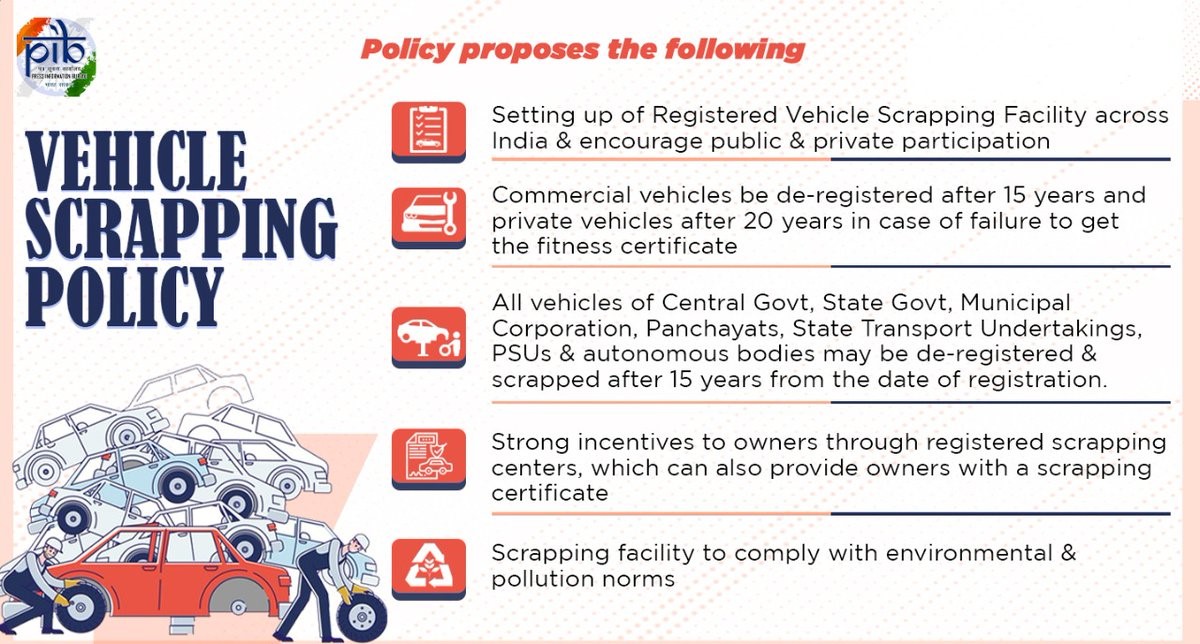
Context
The Ministry of Road Transport and Highways has launched the Voluntary Vehicle Modernization Program or Vehicle Scrapping Policy to create an environment for phasing out undeserving polluting vehicles across the country.
About
- The Program and Policy will be carried out through a community of Registered Vehicle Scrapping Facilities (RVSFs) and Automated Testing Stations (ATSs).
- Presently, there are 60-plus RVSFs across 17 States / UTs and 75 ATSs across 12 States / UTs operational in the country.
- Recognising the importance of Fleet Modernization and Circular Economy, multiple Commercial and Passenger Vehicle Manufacturers have agreed to offer discounts for a limited period against a Certificate of Deposit (Scrappage Certificate).
- Commercial Vehicle and Passenger Vehicle producers have proven a willingness to provide discounts for a confined duration of 2 years and 1 year respectively.
Advantages of Vehicle Scrapping Policy
- Rise in demand for new vehicles: With old vehicles being scrapped, the demand for new vehicles will rise. More than 51 lakh light motor vehicles (personal and industrial) are more than 20 years vintage.
- Employment growth: Establishing scrapping facilities and the boom in vehicle income will lead to job advent in diverse sectors including manufacturing, services, and recycling.
- Better air quality: Scrapping undeserving vehicles will result in much less air pollutants and better air quality.
- Best price for scrap: Vehicle proprietors will get the quality price for vehicle scrappage for workable components which include tyres. The recycling industry may also be more lively leading to higher sales.
- Better Fuel Efficiency: Newer automobiles are generally more fuel-efficient, leading to financial savings in gas intake and decreasing the country’s dependency on fossil fuels.
Challenges
- Financial Burden: Owners of older automobiles, especially the ones from lower-income companies, find it financially burdensome to replace their vehicles, inspite of incentives.
- Waste Management Challenges: The scrapping of millions of vehicles causes challenges in coping with the waste generated, consisting of unsafe materials like batteries, oil, and electronic components.
- Market Disruptions: The surprising influx of scrapped automobiles and the push for new ones could create disruptions in the automotive market, affecting expenses and demand unpredictably.
Way Ahead
- To completely realize the ability of the scheme there is a need to make certain that scrapping facilities are effortlessly only to vehicle owners, in particular in rural and semi-urban areas.
- Also establish a mechanism for regularly reviewing the policy’s impact and make essential modifications primarily based on technological advancements and changing environmental needs.
- Provide help for small businesses and workers in the unorganized sector who are stricken by the policy. This should encompass retraining applications, monetary help, or opportunities to transition into the new automobile environment.
Source: Indian Express
Post Views: 860
